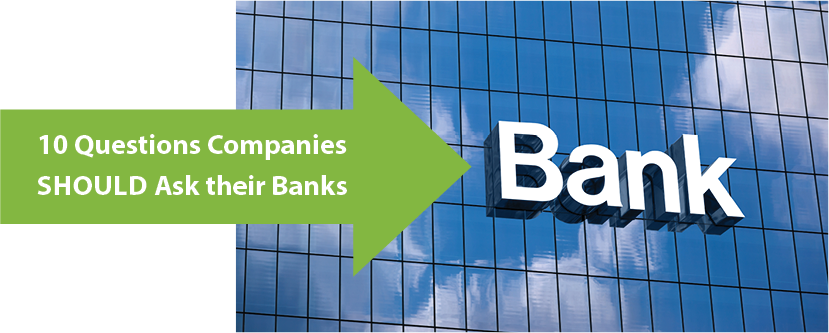10 Questions Companies Should Ask Their Banks About Climate Risk Before Depositing Money With Them
By Amy Kvien, Manager, Financial Institutions, Ceres Accelerator for Sustainable Capital Markets
In an economy where climate risk is a systemic financial risk, it’s not just banks that need to understand how exposed they are to climate risk. The companies that do business with those banks also need to know.
That’s because, while banks’ operations don’t produce many direct emissions themselves, their lending, investing, and underwriting does—banks’ financed emissions are more than 700x greater than their own operational emissions.
It’s through their financing of the economy that banks are exposed to major climate-related financial risks.
If a bank isn’t properly managing its climate risk, it could not only put a client company’s climate goals at risk, but also its deposits and investments. And these threats are only going to increase as the climate risks a bank is exposed to intensify, including physical risks to the real assets of the companies the banks provide financing or lending to due to increasing frequency and severity of extreme weather events and transition risks posed by changes in regulation, technology, and market preferences as we shift to a net zero economy.
In fact, our examination of the climate risk exposure that the 28 largest U.S. banks faced from just a slice of bank lending—syndicated loan portfolios—found that their portfolios had $250 billion in annual exposure to physical risks, and that more than half of bank lending is exposed to transition-related climate risk.
Some banks have started to use climate scenario analysis to assess impacts of physical and transition risks on their business. But how can companies get a better understanding of how banks are analyzing and quantifying their risk exposure and setting and achieving net zero goals aimed at addressing that risk?
The following list of questions can help companies perform a qualitative assessment of their banks’ efforts. Companies can also search online for their bank’s climate-related disclosure using the Task Force on Climate-related Financial Disclosures (TCFD) framework. This will help companies reduce climate risk by selecting a bank that has made more progress on its climate risk management. Here are the critical questions to ask:
1. Do you have a net zero commitment that includes scope 3 emissions (the emissions linked to the value chain of a company’s products or services as a whole)? If so, is it verified by a third party to confirm it is aligned with a 1.5°C scenario? Are you measuring and disclosing your scope 3 category 15 financed emissions with Partnership for Carbon Accounting Financials (PCAF)?
2. Do you have sector-level commitments to reduce emissions for high-transition risk sectors, including energy, power, agriculture, transportation, real estate, metals, etc.?
3. Do you have lending policies for the fossil fuel sector? If so, are they project-based or company-based? Which fossil fuels do they cover? Has your fossil fuel financing decreased over the last year and since 2015 when the Paris Agreement was developed?
4. Do you factor information related to clients’ emissions, environmental impact, transition risk, and/or transition plans into your loan decision making process?
5. Do you offer sustainability products to your customers? What are they? Select from this list and add any others you offer:
- Loans, derivatives, or other financial products with incentives linked to sustainability KPIs
- Energy improvement loans (consumer/business)
- Green vehicle loans (consumer/business)
- Green bond issuance facilitation
- Financial advisors fluent in ESG investing
- Accounts with all deposits invested in green companies
- Green credit or debit cards that give rewards for purchasing from eco-friendly companies
6. Have you aligned your corporate lobbying activities and trade association memberships with climate policies that are in line with the goals of the Paris Agreement?
7. Have you conducted climate scenario analysis for both physical and transition risk on your business activities?
8. Have you made a public commitment to provide a specified amount of sustainable financing?
9. Do you have staff dedicated to identifying and managing climate risks and opportunities? Is there board-level oversight of climate risks?
10. Is executive compensation tied to progress against your net zero commitment?
Once the bank has answered these questions, then companies will be able to assess where the bank stands. If it answers no to six or more of these questions, that should signal concern. If it answers no to between three and five of these questions, the bank is taking some action but could be doing more to manage its climate risk. And if the bank answers no to two or fewer of these questions, that’s a good sign that the bank is serious about climate risk management.
We would like to thank BankFWD for their help in this work. For more comprehensive resources on this topic, please check out their website.



